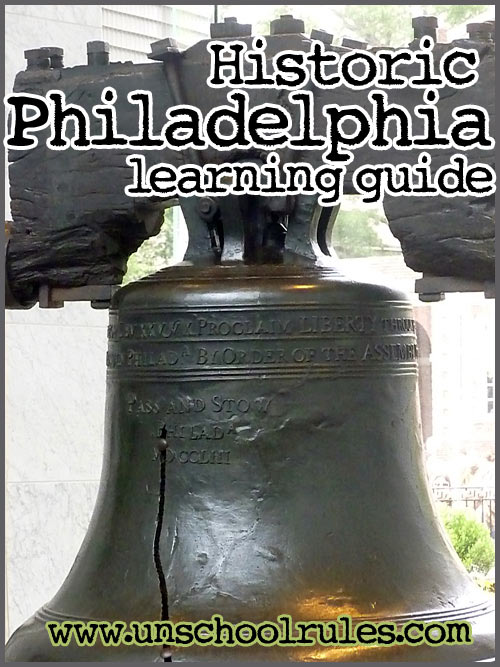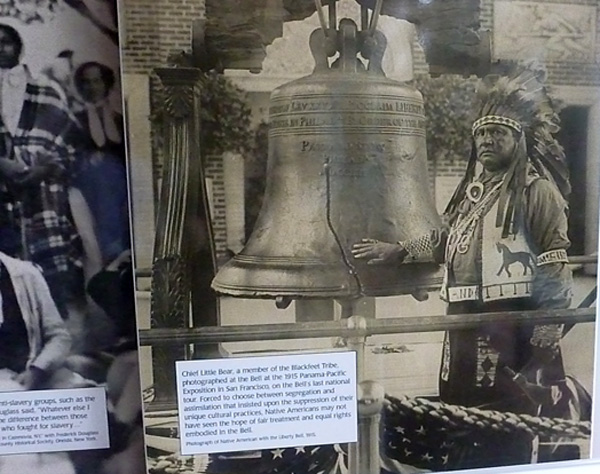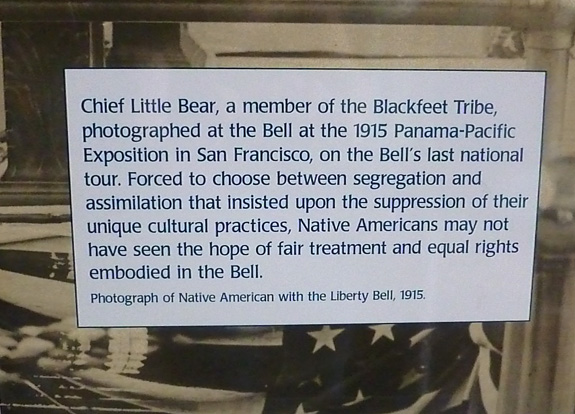When my brother and nephew came to visit from Arizona last week, we took the opportunity to do a little “touristy” sight-seeing at some local historic sites. You know – places that are within a couple hours’ drive from home, but that we really don’t go to on our own? First up was Philadelphia, where we spent a rainy Monday.

We have relatives on all sides of the city – but we rarely go in except for occasional trips to the zoo and, recently, the art museum.
So we jumped at the chance to do some sightseeing at the Liberty Bell and Independence Hall, as well as some other historic sites, and all without spending much money, thanks in large part to some amazing programs that I just learned about from the National Park Service.
So here’s a look at what we saw – and a list of resources available for you if your family would like to learn more about Philadelphia, PA, many of which will work even if you can’t visit in person!
As a side note, parking is readily available in an underground garage that opens directly into the Independence Visitor Center in the historic area, and I highly recommend it. It’s worth the cost to be central to all the historic sites! (More detailed parking information and directions to historic Philadelphia are available here!)
The Liberty Bell
It’s free to see the Liberty Bell, and you don’t need tickets – just show up and get in line! Once you go through security, most people head straight for the bell, but there was a rather raucous field trip ahead of us, so we were even more motivated to slow down and check out the exhibits about its history.
This turned into Ashar’s favorite part – and completely unexpectedly.
We were reading about people who visited the bell in pursuit of other kinds of freedom. (Side note: Did you know the bell wasn’t called the Liberty Bell until much after the Revolutionary War?) Anyway, Ashar came upon this photo of a Native American man with the bell on one of its tours to San Francisco.

His name? Chief Little Bear, the same name as one of the main characters in the “Indian in the Cupboard” book series Ashar is loving so much right now!
Here’s more detail:

I have to admit, seeing the bell itself CAN be a little underwhelming. It’s not very big – don’t forget that it used to hang in a tower, so it wasn’t built to be a showpiece on its own! That said, if you’ve read the history and looked at the photos of its symbolism through the centuries, you really become a lot more impressed.
Read More About the Liberty Bell
- National Park Service site guide to the Liberty Bell Center
- The Liberty Bell: A Symbol for We The People free curriculum guide (this 164-page guide is an EXCELLENT resource for all ages!)
- The Liberty Bell: From Obscurity to Icon free lesson plan
- Saving the Liberty Bell (this historical fiction book for elementary-schoolers is surprisingly accurate and engaging)
- Our Liberty Bell (another book for elementary students, this one nonfiction)
- The Liberty Bell (Icons of America) (this nonfiction book is definitely for high-schoolers and adults – but very detailed)
Independence Hall

Tickets to tour Independence Hall are required but are also free, and sometimes you can reserve them in advance online.
I say sometimes because we tried reserving some online and were told they were full; when we stopped by the desk in the Independence Visitor Center on the day of our visit, though, we were able to get a set! Moral of the story: It’s worth it to ask, even if you haven’t been able to register ahead.
Our Independence Hall tour was interesting – though we arrived a bit early. We whiled away some of the time in line, where Ashar (wearing her Starry Night hoodie) impressed the older couple in front of us with her Vincent Van Gogh knowledge!
And while waiting, Ashar was introduced to The. Greatest. Thing. Ever.
Seriously.
One of the rangers, seeing we were with a family group instead of a school tour, came over and handed Ashar the start of the set of Independence Trading Cards.
Apparently, all the national historic sites have these, but Independence National Historical Park was the first. The cards cover everything from the bald eagle to the Syng Inkstand to the Rising Sun Chair to Martha Washington to William Penn. To get a card, kids go talk to a ranger at any of various spots on the site, and the ranger asks them a question. The great thing for Ashar was that even the questions she didn’t know, she listened intently as the ranger explained!
This does a couple things, I think. First of all, Ashar got a handful BEFORE the tour, and during it, she paid more attention when the ranger was talking about something she had a trading card for. So that was great by itself!
But it also encourages the kids to interact with the rangers. In a tour group of 30 to 50 people, certainly little kids aren’t asking questions in front of the group (or even Ashar, who’s 12!) But after the tour, Ashar was able to go up to our guide and not only get a trading card but ask him an unanswered question she had, one-on-one.
In addition to the trading cards, the park service also has what it calls the Junior Ranger Program. Each site has a booklet of activities for visitors, and by completing a certain number, kids earn a badge. We actually weren’t aware of this while we were in Philly – we found out the next day, when we went to Harpers Ferry, West Virginia!
The good news is, you can download the Independence Junior Ranger booklet here – and many of the activities can be done from home!
Read More About Independence Hall, the Declaration of Independence and the Articles of Confederation
- Independence Hall: International Symbol of Freedom free lesson plan
- More information on the Independence Junior Ranger program
- Independence Hall (Symbols of Freedom) (this elementary-grade nonfiction book is a good look at all of what happened at Independence Hall)
Read More About the Revolutionary War, Benjamin Franklin and Other Philadelphia History Sites
- Full list of Philadelphia-area curriculum guides from the National Park Service
- Independence National Historical Park main site
- Ideas for an American Revolution lapbook (this is from my new blog friend Jimmie of Jimmie’s Collage… and there are some great things here!)
- Eclectic Homeschool Online’s American Revolutionary War Unit Study
- Revolutionary War on Wednesday (this book is a fictional one for later elementary and early middle grades from the Magic Treehouse series, which Ashar has enjoyed in the past!)
- Johnny Tremain (I read this fictional classic set during the Revolution during seventh grade, and I hope to spark Ashar’s interest in it during the next year or two)
- DK Eyewitness Books: American Revolution (next to anything by National Geographic, anything by Eyewitness is a favorite with Sarah)
- New! My friend Judy at Contented at Home just created this amazing homeschool resource guide for studying Benjamin Franklin. It blows away any other guide I’d found on him, so please check that out!
Any other suggestions for good Philadelphia or Revolutionary War study ideas? If so, please comment!
More of our trip and resource guides
This post is part of an occasional series of “Family Field Trip” posts, combining our own adventures with resources we’ve found helpful. Many of these will work even if you can’t visit in person!
 We’ve also shared resources to help you learn about and make the most of a visit to Assateague, Md., and Chincoteague, Va. We also took a family field trip to Jim Thorpe, PA, and shared our favorite resources for that!
We’ve also shared resources to help you learn about and make the most of a visit to Assateague, Md., and Chincoteague, Va. We also took a family field trip to Jim Thorpe, PA, and shared our favorite resources for that!
I’ve also been doing a loose series of posts good for unit studies. Earlier posts in that series shared our favorite Phantom of the Opera learning resources and some great ideas for studying the solar system!
This post is also part of the iHomeschool Network’s Best Homeschool Field Trips linkup. Click the image at right to read more!
More great history resources
 This post is part of the iHomeschool Network Massive Guide to Homeschooling History.
This post is part of the iHomeschool Network Massive Guide to Homeschooling History.
Make sure to check it out for tons of other great history resources, including links to a dozen more Unschool Rules posts!


